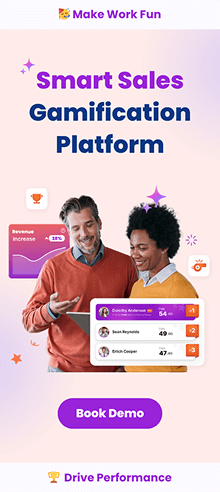What do we Want
Every organization (and most people) are looking for ways to motivate behavioral change in others. For companies, the behavior change they are looking for is getting staff to do more work. They want employees to do more of the activities that drive better business outcomes. It is ensuring employees focus on what the company wants to be done rather than what the staff member may prefer to do while at work.
To achieve behavioral change, many organizations focus on motivation. They put up inspirational posters, hire motivational speakers, or undertake outdoor team building activities to get staff engaged and motivated. The positive impact of an inspirational speech is usually short-lived as people get back to their day to day activities.
Some organizations assume that people will change their attitudes and behavior when presented with new information. The high rates of smokers prove knowledge and awareness are not enough to change behavior. Similarly offering extrinsic rewards may not affect behavioral change especially in the long term.
The Concept
So if behavioral change is not about being inspired or informed, what is it about? Since time began many philosophers have proposed ways to understand persuasion, influence, and behavior change. Ancient Greek philosopher Aristotle, alongside Socrates and Plato, laid much of the groundwork for modern western philosophy.
In more recent times, one of the most influential people in the field of human behavior design is Dr. BJ Fogg. He founded the Persuasive Tech Lab at Stanford University, where he directs research and design. He also works with industry and organizations to apply his approach in real-life situations.
He hypothesizes that designing for behavioral change is systematic. It’s not guesswork. It’s not art, it is a science. Like all good science, it has a formula that is described as B=MAT. That translates as Behavior equals Motivation, Ability, and a Trigger.
B=MAT Explained
Behavior is the outcome you want. To be effective it needs to be specific. For sales people this might be call 50 clients today, or send 25 introductory emails to prospects, or write 10 quotes for potential buyers. To achieve a successful outcome a company needs to make the target behavior as simple as possible in order to increase the individual’s ability to complete the expected behavior.
The more complex the behavior, the less likely the individual is to feel motivated. Also the less likely they are to have the ability to execute the activities. If the expected behavior is to make 50 client calls and send 25 introductory emails and write 10 quotes then the behavior is more complex. Employees become confused about the priority of activities and what they should do first. The old adage applies to Keep It Simple, Sweetie, in order to get the best out of your employees.
Motivation is the desire to do something. BJ Fogg highlights three Core Motivators, which are central to the human experience. They are Sensation, Anticipation, and Belonging. Each of these motivators can have a positive or negative aspect. Sensation can be pleasure or pain. Anticipation can be in the form of hope or fear Belonging is one of the strongest motivators that exist and can be expressed as acceptance or rejection.
Many bad behaviors have involved isolating people based on their difference (be that gender, religion, ethnicity, or other aspects of humanity). Such behaviors often result in workplace harassment leading to suicide or violence. Inclusion and bonding with others is a more highly motivating factor for most people.
Ability defines if the person can do the behavior that is specified. In order to perform a target behavior, a person must have the ability to do so. There are two paths to increasing ability. You can train people, giving them more skills. The alternate is to make the target behavior easier to do. BJ Fogg calls this simplicity. Making the target behavior simple means you increase the confidence of the individual in their ability.
Trigger is the reminder or prompts to do something. It is a cue that alerts the individual to perform the behavior. Triggers can be designed. In companies, this is certainly a good approach. The use of technology implies a more objective approach and one that is repeatable. The goal is to design technology that enables people who are already motivated to easily succeed in the behavior once they are triggered.
B=MAT and Leaderboards
Leaderboards provide a perfect example of where B=MAT comes to fruition in the workplace. Leaderboards provide immediate performance feedback to individuals and teams. The rankings show the level of activities or behaviors that have been executed. When there is a change in the leaderboard rankings; for example, a colleague has been overtaken or has risen to the top of the ladder, then a notification is sent to all players. This notification acts as the trigger. It is a call to action, a “do it now”.
The expected behavior is to do more of the activities that are being measured on the leaderboard. The motivation is the opportunity to climb to the top of the leaderboard and be recognized by peers.
Ability plays an important part in the successful use of this formula. Staff needs to have the correct levels of training and support to undertake the behaviors that are expected. The easier it is for them to adopt the new behavior the more readily they will perform in that capacity.
Fortunately, a leaderboard can trigger training, coaching or counseling behaviors with managers as they see their staff failing to achieve the expected behavior.
Conclusion
The right combination of motivation and ability when triggered appropriately, will result in the desired behavior by moving the individual through any barriers to execution.
For more news and updates, follow us on our social media profiles: LinkedIn and Twitter



